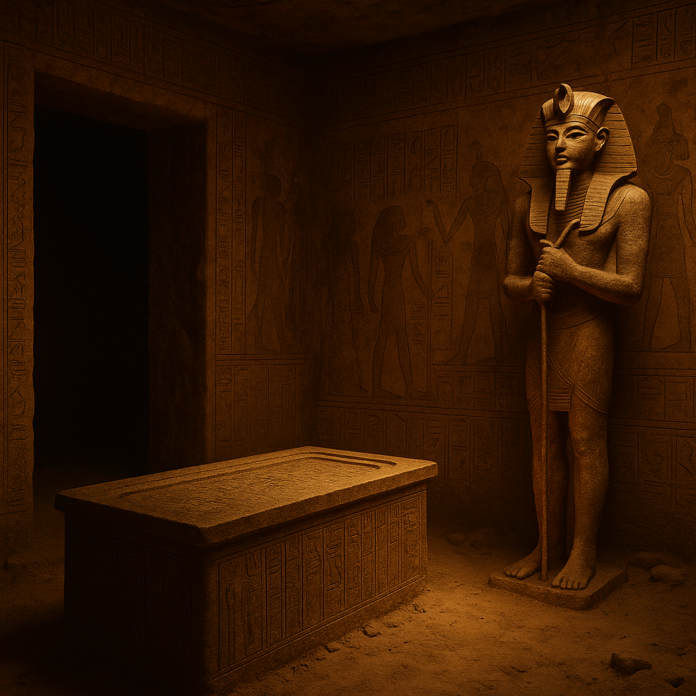When British archaeologist Howard Carter opened the sealed tomb of Pharaoh Tutankhamun in November 1922, he unleashed not only one of history’s greatest archaeological discoveries — but also one of its most enduring legends: the Curse of the Pharaohs.
The myth claimed that anyone who disturbed the boy king’s resting place would suffer death or misfortune.
But was it real… or just a story that got out of control?
🏺
The Discovery That Changed History
Deep in Egypt’s Valley of the Kings, Carter and his team uncovered a tomb untouched for over 3,000 years.
Inside lay treasures beyond imagination — gold chariots, jeweled daggers, a solid gold coffin, and the perfectly preserved mummy of King Tut, who had died mysteriously at around 18 years old.
But as the world celebrated, tragedy followed.
☠️
The Deaths That Sparked the Legend
A few months after the discovery, Lord Carnarvon — the wealthy patron who financed the expedition — died suddenly from an infected mosquito bite.
Within days, newspapers exploded with headlines like:
“Death Comes to Those Who Disturb the Tomb!”
Rumors spread that the lights in Cairo flickered at the exact moment of his death. His dog, back in England, reportedly howled and dropped dead at the same time.
Soon, every member of the team became part of the so-called “curse watch.”
By the end of the decade, more than 20 people connected to the excavation had died — many in strange or premature ways.
Coincidence? Or something more sinister?
🧪
The Science Behind the Myth
Modern historians and scientists have dug deeper into the “curse.”
One explanation: toxic mold and bacteria that had thrived in the sealed tomb for millennia.
When the explorers broke in, they may have inhaled deadly spores — triggering infections that were then blamed on supernatural forces.
Another theory points to psychological suggestion — the power of fear itself.
Once people believed the tomb was cursed, every illness or accident became proof.
Interestingly, Howard Carter himself — the man who first opened the tomb — lived another 17 years after the discovery.
If there truly was a curse, it seemed selective.
🔮
Ancient Warning or Modern Invention?
There is, in fact, no Egyptian inscription found in Tutankhamun’s tomb that mentions a curse.
Most scholars agree the “curse” was a Western invention, created by the press to sell newspapers in the 1920s — a perfect mix of mystery, exoticism, and superstition.
Still, ancient Egyptians did believe deeply in spiritual protection.
Some tombs from other dynasties do contain warnings like:
“Death shall come on swift wings to him who disturbs the peace of the king.”
A phrase that eerily mirrors what was later said about King Tut’s tomb.
🏆
The Legacy Lives On
More than a century later, Tutankhamun’s story continues to captivate.
His mask remains one of the most iconic symbols of ancient Egypt — and the legend of his “curse” reminds us how fear, faith, and fascination intertwine in human history.
Whether it was divine vengeance, deadly bacteria, or pure coincidence, one thing is certain:
The curse of King Tut may never die — because we don’t want it to.
✨
Quick Facts (for your sidebar or post footer)
- King Tut’s tomb was discovered in 1922 by Howard Carter.
- More than 5,000 artifacts were found inside.
- The supposed “curse” began after the death of Lord Carnarvon.
- No direct inscription about a curse exists in the tomb.
- The real danger may have been ancient mold and toxins.

